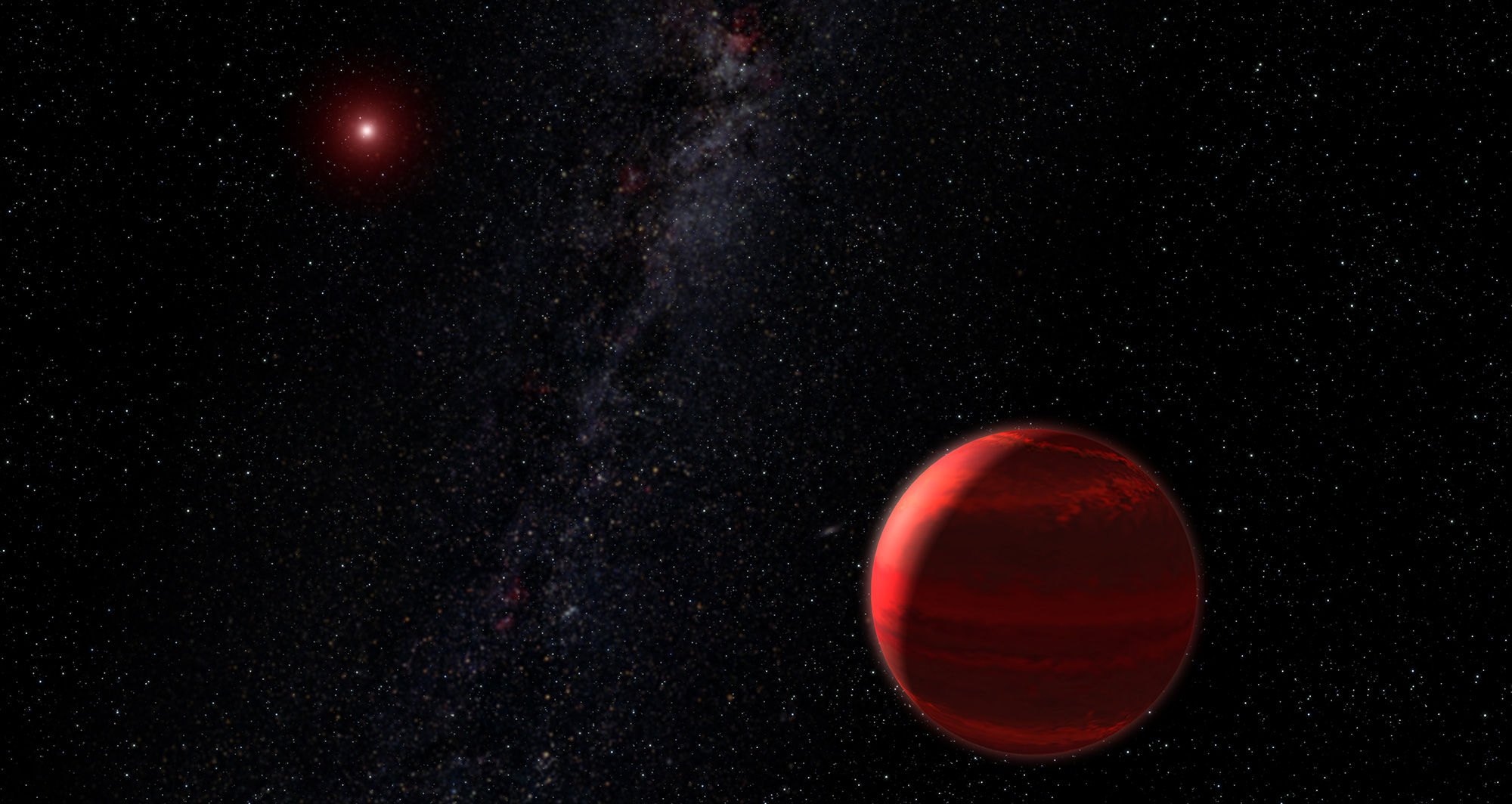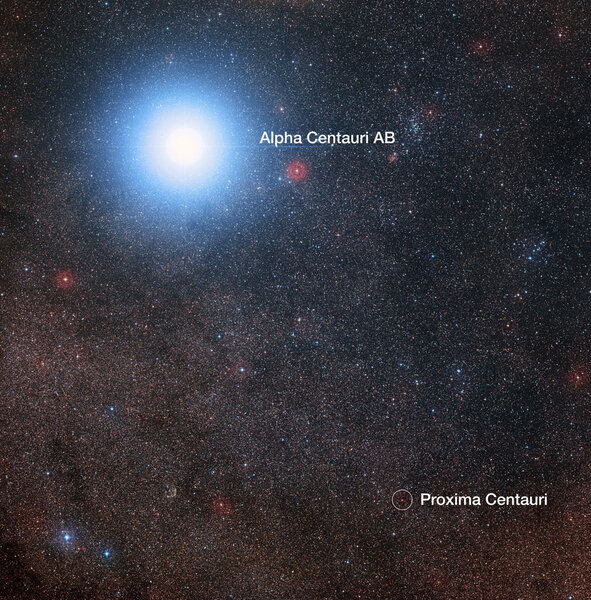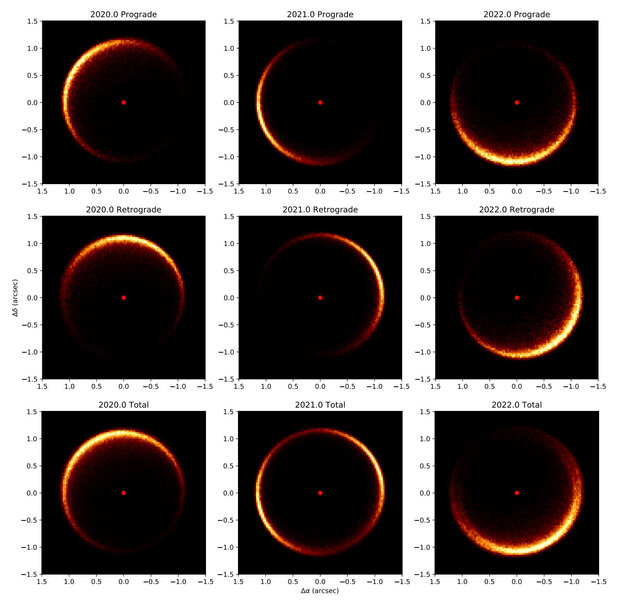Create a free profile to get unlimited access to exclusive videos, sweepstakes, and more!
A *second* possible planet for Proxima Centauri!

The closest star in the Universe to the Sun is Proxima Centauri. It's a red dwarf: Tiny, cool, faint, orbiting a pair of more Sun-like stars we collectively call Alpha Centauri. Unremarkable, even more so for being one of hundreds of billions of such stars in our Milky Way alone. Were it not so close to us — a mere 4.244 light years away, in a galaxy 120,000 light years across — we'd hardly pay it any attention.
Except… in August 2016 astronomers announced they had confirmed the presence of a planet orbiting the diminutive star, and moreover it's very roughly the same mass as Earth, orbiting Proxima in its habitable zone.
And now, astronomers have announced what may very well be a second planet orbiting the star!
This second candidate planet, called Proxima Centauri c (or just Proxima c), was found using a combination of two methods: reflex velocity and astrometry. Hang tight, I'll explain in a moment. But they found the planetary candidate, if it exists, has a mass of about 12 times that of Earth (with a large uncertainty of +12 and -5), so it's probably roughly the size of Uranus or Neptune. It orbits the star once every five years, which would put it about 1.5 times farther from Proxima than Earth is from the Sun. Because the star is so faint this makes the planet cold, about -200°C.
Most exoplanets — worlds orbiting other stars — are found by the transit method, where the planet passes in front of the star, making a mini-eclipse that's detectable as a drop in starlight. One advantage of that method is that it reveals the size of the planet. Unfortunately, neither Proxima b nor c are known to transit the star, so their sizes are unknown.
The way Proxima c was found was by combining extremely precise spectra and measurements of the star's motion through space.
A planet orbits a star due to the star's gravity. But the planet has gravity too, so as the star tugs on the planet the planet tugs on the star. This induces a small motion in the star that reflects the motion of the planet; a circular planetary orbit generates a smaller circular motion in the star around their mutual center of gravity (called the barycenter). The easiest way to see this is by taking a spectrum, breaking the light of the star into thousands of individual wavelengths (colors).
When the star approaches the Earth in that little circle the wavelength of its light gets a little bit shorter (we call that blushift), and when it heads away in the other half of its circle the wavelength gets longer (redshift); this is similar to the Doppler shift in sound. We call this shift in the star's motion the reflex velocity. It's very hard to measure, because the shift is very small, and Proxima is very faint. But over time enough spectra were built up to see what looks like a cyclical five-year shift in the light. The mass of the planet can be found by the size of the shift. Again, it's very hard to measure, which is why the uncertainty is large.
Moreover, as the star wobbles back and forth in its mini-orbit around the barycenter, this shift in position in the sky can be measured (measuring a star’s position is called astrometry). That’s nearly impossible for most stars in the sky because they are so far away and the circle they make so small. But Proxima is close by and low mass, so the circle it makes is just big enough to detect. This was done using Gaia, a European Space Agency mission that is measuring the positions, motions, and colors of over a billion stars, including Proxima.
Together, the two observations reveal the presence of the candidate planet, as well as some parameters of its orbit like the tilt at which we see it. While it's not possible to pin down exactly where the planet is in its orbit, the calculations do show where it's most likely to be, with some uncertainty. It depends on whether it orbits prograde (in the same direction as Proxima’s rotation) or retrograde — given Proxima orbits Alpha Centauri prograde, and both stars making up Alpha are prograde, too, it's a good bet the planet does as well — but the astronomers were able to make some predictions.
This may help astronomers do follow-up observations to look for the planet.
The pace of these announcements is rather amazing. The first announcement of a possible detection was in January 2020, and this new paper came out in mid-March. Another paper was published on April 1, with more info on the planet using different methods, including getting a mass estimate of 18 ±5 times Earth's mass, which is consistent with the results I mentioned above.
I hope this new planet candidate turns out to be real. Having one planet orbiting the star is already pretty amazing, but having two? In my mind that makes it a solar system. And if two, why not more? How about moons orbiting the planets, or asteroids and comets around the star, too?
There's still a lot we don't know about this nearest star. But we're learning.
Tip o' the coronagraph to astronomer David Kipping for this.
















